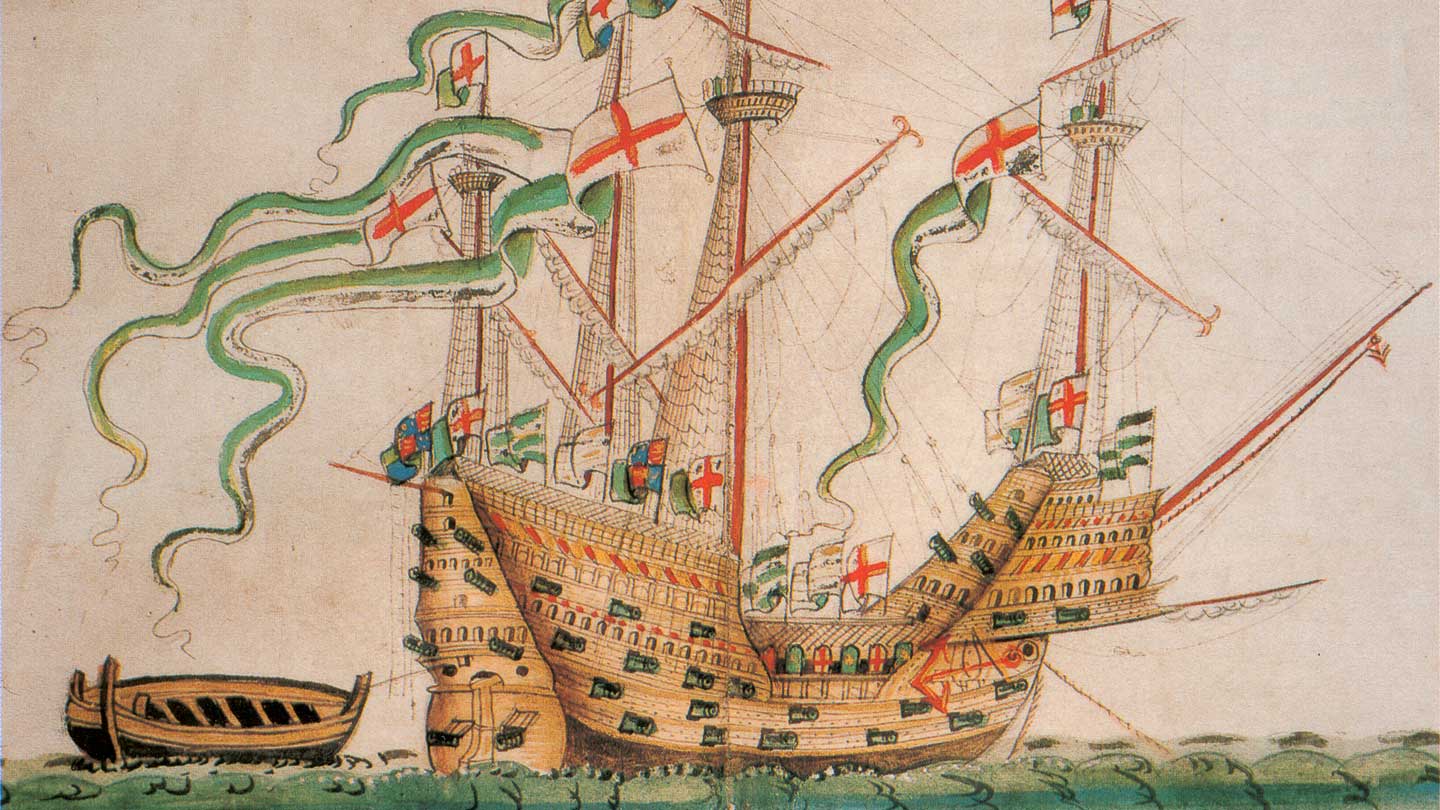Compared to the Mary Rose, built at 600 tons, the Peter Pomegranate was a smaller ‘sister’ ship built at 450 tons. However, it was eventually enlarged to 600 tons in the 1530s when a lot of the king’s naval fleet was being re-fitted – including the Mary Rose.
The name Peter Pomegranate likely comes from St. Peter – the patron saint of shipbuilders – and the pomegranate being the emblem depicted on Katherine of Aragon’s badge – to whom Henry had wed the year previously.
Following Henry’s divorce from Catherine in the 1530s, the ship was renamed simply Peter when re-fitted.
The Peter Pomegranate fought in the War of the Holy League (1511-1516) alongside the Mary Rose, with Sir Wistan Browne as captain. It also fought, under the command of John Clere, in the Battle of the Solent in July 1545, alongside the Mary Rose, but did not meet the same fate as its sister ship. It went on to serve in action against the Scots at the Battle of Pinkie Cleugh in 1547 and was last mentioned in records in 1558.
It is not known what happened to the Peter Pomegranate after this date but is remembered in connection to its more well-known and fateful ‘sibling’, the Mary Rose.
